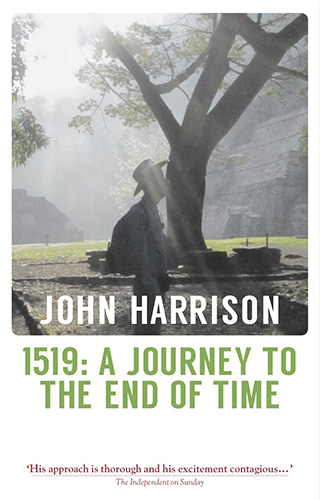1519 A Journey to the End of Time

Further Reading
I read around 200 books and articles in preparing this book, and consulted many more. These notes will guide a general reader wanting to explore in more depth. The principal historical accounts are described in the book itself, and detailed under Acknowledgements.
For Mexico in general, Carlos Fuentes’s intelligent and thoughtful observations are an unbeatable place to start, and his works fizz with firey skill. The Buried Mirror surveys not just the conquest but the Spain it sprang from, and its legacy in Mexico today. The Mexico Reader by Gilbert Joseph and Timothy Henderson is another invaluable collection of essays in a fine series published by Duke.
As general introductions to the Aztecs, Jacques Soustelle’s Daily Life of the Aztecs first published in 1955is still useful, as are The Aztec World, edited by Elizabeth Brumfiel and Gary Feinman, Warwick Bray’s The Everyday Life of the Aztecs, and Michael E Smith’s The Aztecs. For their exhibition of 2009, the British Museum published Moctezuma Aztec Ruler, edited by Colin McEwan and Leonardo López Luján, uniting the BM’s skills with those of their Mexican colleagues at the National Anthropological Museum.
Michael D Coe’s The Maya is an sound introduction to that culture and people.
Books like David Abulafia’s The Discovery of Mankind describe the human element of discovery: how Europeans learned about the the other peoples with whom they shared the earth. For heavyweight academic treatment of the same topic area, Anthony Pagden’s European Encounters with the New World and The Fall of Natural Man are challenging but highly rewarding. In Peoples and Empires, Pagden looks at the same issues through history’s great empires. Tzvetan Todorov’s The Conquest of America is another heavyweight look at the perceptions and misperceptions embedded in accounts of encounters between the New and Old Worlds, and their interpretation.
For life in the Aztec capital before 1519 read Tenochtitlán by José Luis de Rojas, or Davíd Carrasco’s City of Sacrifice, the Aztec Empire and the Role of Violence in Civilization.
Native views are collected and interpreted in the books of Miguel León-Portilla, especially Broken Spears: The Aztec Account of the Conquest of Mexico, but also Fifteen Poets of the Aztec World, Aztec Thought and Culture: A Study of the Ancient Nahuatl Mind, and Pre-Columbian Literature in Mexico. See also Flower and Song, Poems of the Aztec Peoples, edited by Edward Kissam and Michael Schmidt, and We People Here, and James Lockhart’s Nahuatl Accounts of the the Conquest of Mexico, and his The Nahuas After the Conquest. These poems are odd but reward a little effort with spasms of brave beauty.
La Malinche in Mexican Literature by Sandra Messinger Cypess analyses the changing representation of Malinche in Mexico.
The Conquest of Mexico by Hugh Thomas remains an invaluable general history of the conquest. Jaime Suchlicki’s Mexico provided a succinct introduction to general Mexican history. The relevant section of Modern Latin America by Thomas E Skidmore and Peter H Smith helped me with modern Mexican history.
Plagues and Peoples by William H McNeill was helpful in understanding the relationship between exploration and disease. A more specific contribution on Mexico may be found in Spanish and Nahuatl Views on Smallpox and Demographic Catastrophe in Mexico by Robert McCaa in the Journal of Interdisciplinary History XXV:3 Winter 1995, 397-431. Ecological Imperialism, The Biological Expansion of Europe 900-1900 by Alfred W Crosby discusses the wider impact of biological transfers round the globe.
Questioning Collapse edited by Patricia A McAnany and Norman Yoffee administers an expert and welcome antidote to populist and simplistic accounts of why some cultures declined. Take Jared Diamond off curricula and put this on instead!
The Sport of Life and Death, The Mesoamerican Ballgame, is a comprehensive collection of beautifully illustrated essays on a ritual of religious and philosophical importance.
The technical paper on the Monte Alban calendar I refer to is Sun Above Sun Below, Astronomy, Calendar and Architecture at Monte Albán and Teotihuacan, Arqueología Oaxaqueña Serie Popular 2, Damon E Peeler and Marcus Winter, CONACULTA-INAH 2010.
Let me know if you have any books on these topics to recommend.